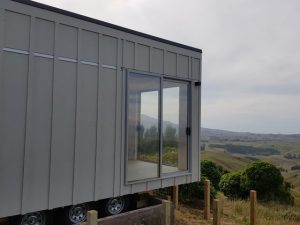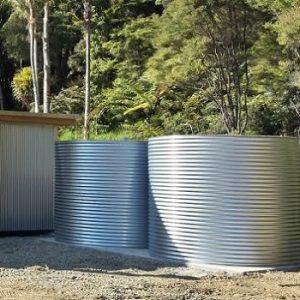 With the price of solar power at an all-time low, the increasing availability of buildable land outside of urban centres, and the imperative that we reduce our environmental impact and fossil fuel consumption, it’s never been easier to live off-the-grid while maintaining the luxuries of modern life. There are, however, lots of things to consider which can be a barrier for people taking on the challenge of going solo. This blog post aims to help make the options and considerations a little clearer and to avoid unexpecteds for you on your journey to achieve your off-grid goals.
With the price of solar power at an all-time low, the increasing availability of buildable land outside of urban centres, and the imperative that we reduce our environmental impact and fossil fuel consumption, it’s never been easier to live off-the-grid while maintaining the luxuries of modern life. There are, however, lots of things to consider which can be a barrier for people taking on the challenge of going solo. This blog post aims to help make the options and considerations a little clearer and to avoid unexpecteds for you on your journey to achieve your off-grid goals.
-
Define your objectives and constraints
There are several reasons why you might want to live an off-the-grid lifestyle. It might be that access to reticulated water, grid power or wastewater treatment simply isn't practical, you may want to reduce your running costs, you might be motivated by an ethic of reducing your environmental footprint, or you simply want to be independent and resilient. Perhaps, you're really 'techy' and just want the best solution. Whatever it is, even if it’s a combination of factors, try to define it really clearly so you know what success or failure will look like when you start looking for solutions.
Once you understand your 'Why', you can detail what needs to be true in order to achieve your goals. You need to ask yourself questions such as:
-
-
- What components of my set up need to be off-grid?
- Does it need to be transportable with my building?
- What resources do I have available? (e.g. Land, rooftop space, sunlight hours, budget, etc.)
- Do I want/need to be fully off-the-grid, or can it be supplementary?
- How much power and water do I(/we) currently consume, and how much sewage do I produce? (Your energy bill will tell you your overall power usage, or if you want to calculate it based on appliances this EnergyWise website has a useful calculator tool)
- Don’t limit yourself to these questions; what other factors need to be true in order for your system to work for you?
-
-
Explore your options
a. Power
Solar power is, of course, the most common and reliable form of off-grid electricity generation. This system generally includes the Photovoltaic Solar panels, a DC-AC inverter and storage batteries. However, if you’re also connected to the grid and you just want to feed excess power back to the grid you can avoid batteries and just have the panels and inverter. You can always add batteries later if you want to be fully self-sufficient and resilient to grid outages.
It’s really important when designing the solar PV system that you consider not only the energy consumption but also the peak demand, which determines the type of inverter you will need. To calculate the maximum demand (equivalent to ‘flow’ in water terms), just add up the power consumption of appliances you need to be able to use simultaneously.
You can reduce your electricity demands by using natural gas to heat hot water and to power your stove, which are two of the single most energy-consuming appliances in the home. However, this creates additional considerations regarding the added cost of natural gas supply, as well as the added carbon emissions this solution creates.
In New Zealand, we’re lucky to have a large proportion (~77%) of our electricity generation from renewable sources, mostly hydro and geothermal. Thus, for those wanting to maintain a low emissions profile, it would be best to connect to the grid and use solar power to supplement your energy consumption so that all your power requirements are powered by electricity. To reduce your grid power usage and costs, consider instead using a solar hot water system that gets supplemented with electricity. We can offer a solar thermal and PV setup including an electric cylinder on an Ecopod starting from $19,500 installed.
To find out more about different systems available, get in touch with our team and we can supply you with detailed information on what’s possible.
b. Water
 Rooftop rainwater collection and water bores are the two most reliable and widespread off-grid water solutions. Many people prefer rainwater as the nicest tasting, but it’s important to regularly check for contaminants on your roof to avoid leaf litter, animal faeces or dead animals getting into your drinking supply and potentially introducing bad bacteria. You can find a useful resource on how to look after your water tanks on the government Heath Ed website, here.
Rooftop rainwater collection and water bores are the two most reliable and widespread off-grid water solutions. Many people prefer rainwater as the nicest tasting, but it’s important to regularly check for contaminants on your roof to avoid leaf litter, animal faeces or dead animals getting into your drinking supply and potentially introducing bad bacteria. You can find a useful resource on how to look after your water tanks on the government Heath Ed website, here.
We’re happy to install gutters on rooves and recommend water tank specialists to get the right size tank for your requirements and budget. You also have to consider an overflow soak-away/dispersal in a large rainfall event so it doesn’t affect walkways, foundations or create unwanted erosion.
c. Waste
It’s a common practice in New Zealand to use a septic tank for wastewater containment and dispersal. These systems generally consist of two to three tanks that allow for sedimentation of solid waste before the biologically processed contaminants are dispersed through a filtration system into the land. Standard practice is to have the sludge from tanks cleaned every 3 to 5 years depending on the capacity of your system.
Limitations of this system are: requiring owning the land it’s on; the upfront investment costs; the requirement of power for pumping; and having to empty it regularly. Alternatives such as Natural Flow are an electricity-free system, which still processes wastewater, yet another solution is to separate toilet waste as compost which can be used on the garden and treat greywater separately if your Regional Council allows it. We offer a simple solution to get wastewater from a Pod to a treatment system called a Black Box which pumps everything through a centrifuge to break up any solids and allow to flow easily up to 100m even uphill to the gulley trap of the sewer or septic tank.
It should be noted that there are no overarching guidelines that address greywater reuse in New Zealand, this is partly due to the variable climatic conditions across the country resulting in varying water supply volumes as well as the different urban densities and land-use patterns. Therefore, each District Council have their own policies relating to greywater reuse.
For a breakdown of the various compost toilet options, enquire with our team and we’ll point you in the right direction.
-
Design your solution
Now the only thing left to do it put together all the information and identify strengths and weaknesses of solutions, whatever your success measures are. There’s no single way to solve the challenge of going off-the-grid, but many different ways. If you’d like assistance with developing your solution, we’re only a quick phone call or email away and we’d be more than happy to assist you. Our phone number is 09 869 324, or you can email sales@ecopod.co.nz.
More blog posts you might enjoy:
The Added Value Of A Sleepout Cabin
An Ecopod Granny Flat keeps extended family close
How we deliver the ‘eco’ in Ecopod
